
views
- Egyptians used symbols like the Eye of Horus and the ankh to protect themselves from evil spirits.
- Symbols like the Triple Goddess, the Horned God, and Hecate’s wheel are used in Wiccan practices to provide protection and energy.
- In Norse mythology, amulets of the Norse god Thor’s hammer, Mjolir, were said to protect the person who wore it.
Hamsa Hand

The hamsa hand represents happiness, luck, health, and protection. The hamsa hand is a symbol commonly found in the Middle East and symbolizes the Hand of God. This symbol goes by many names, including hamsa, hamesh, Hamesh hand, and khamsa. The style of the hamsa hand has 2 main variations. In one style, the hand has 2 symmetrical thumbs on each side. In the other, the hamsa hand just looks like a regular hand. Some believe that the 5 fingers on the hamsa hand represent the five elements (fire, air, ether, earth, and water) and/or 5 of the 7 chakras (solar plexus, heart, throat, root, and sacral). People usually wear the hamsa hand as an amulet, either with the fingers pointing up or down. Some people also place the hamsa hand above the entryways to their homes for protection.
Eye of Horus

The Eye of Horus in an ancient Egyptian sign of protection. This symbol comes from the ancient Egyptian myth of the god Horus who lost his eye in a battle with the god Set. With the help of another deity, Horus’ eye was restored, and he offered it to his deceased father Osiris to sustain him in the afterlife. From this myth, the Eye of Horus has become a symbol of protection, healing, and prosperity. This symbol is also known as the left wedjat eye or udjat eye. The Eye of Horus a mirrored version of the Eye of Ra (also known as the right wedjat eye). According to later Egyptian traditions, the Eye of Horus represents the moon while the Eye of Ra represents the sun. Many people wear the Eye of Horus in amulet form.
Ankh
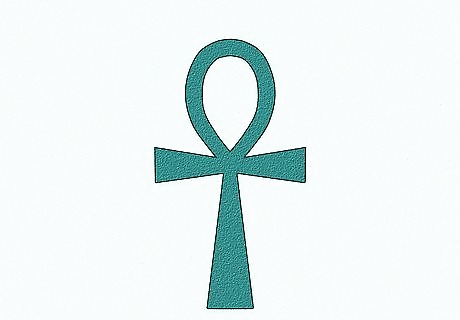
The ankh is the ancient Egyptian symbol of life. The ankh is a cross with a loop for the top portion. The loop represents the rising sun while the two shorter segments on the side symbolize the mortal realm. The long bottom portion represents the divine world. Important Egyptian figures wore this as a symbol of their immortality, but it was also worn as an amulet to protect people from evil spirits and other things that could cause harm. The ankh is used today in neo-paganism, New Age spirituality, and some forms of African diasporic religion as a symbol of protection. Some also interpreted the ankh to represent the sun, water, and air, which were all things necessary to preserve and protect ancient Egyptian culture and life.
Tyet

The tyet is associated with the protective powers of the goddess Isis. The tyet, also known as the Knot of Isis, is a symbol of protection that was widely used in ancient Egypt. Isis was a goddess worshipped for her unmatched magical powers. She was said to protect people from their enemies, and the Nubian culture involved placing tyrets alongside mummies to protect them. Today, some people wear the tyet as an amulet or other pieces of jewelry for its protective powers.
Triple Goddess
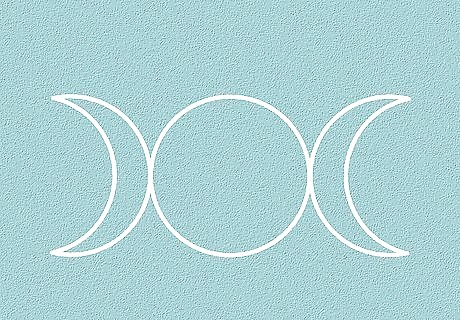
The Triple Goddess is a Wiccan symbol of feminine power. The symbol consists of a waxing, full, and waning moon which represent the Maiden, the Mother, and the Crone. These three aspects of the Triple Goddess symbolize youthful energy, nurturing and protective forces, and wisdom respectively. Together, they represent the cycle of life, and wearing this symbol is often a sign of power and protection.
Horned God
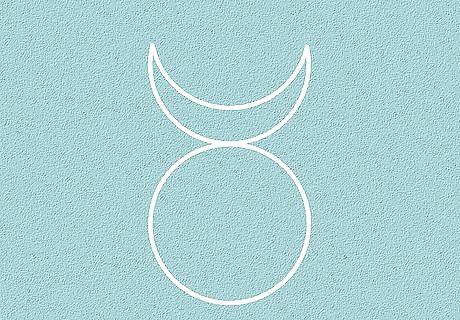
The Horned God is the masculine counterpart of the Triple Goddess. In Wiccan practices, the Horned God represents masculine power, nature, and virility. His symbol is a full circle with an upturned crescent on top of it, and people who wear his symbol are said to be granted bravery and strength. The Horned God is also the god of death and decay. His symbol and story act as a reminder that all people are connected to the earth and must do what they can to protect the people and world around them. Wiccans generally view the Horned God and Triple Goddess as equal partners rather than opposing forces.
Hecate’s Wheel

Hecate’s wheel protects those who practice magic. Hecate is the goddess of magic and her symbol are used when performing magic or rituals to invoke her power and protection. Hecate’s wheel is made up of a circle surrounded by a labyrinth, symbolizing the meeting of heaven and earth and the various paths of life. Hecate also protects households, women, children, and travelers. Travelers might use Hecate’s wheel to grant them protection on their journey since Hecate is also the guardian of crossroads.
Unicursal Hexagram

The unicursal hexagram symbolizes harmony. The word “unicursal,” surprisingly, has nothing to do with curses. Instead, the name refers to how this 6-pointed symbol can be drawn in one stroke without ever lifting up your pen or pencil. This symbol is closely tied to the occult philosophy Thelema, and it represents the harmony and unity of opposites. Along with manifesting balance and spiritual connection, people also use the unicursal hexagon for protection. Thelema is a Western spiritual philosophy founded in the 1900s by Aleister Crowley. The goal of many Thelemites is to ascend to a higher state of existence and understand their true purpose and place in life. In some Wiccan practices, the 6 points of the hexagram represent the 6 elements: earth, air, fire, water, spirit, and the divine.
Pentagram

Pentagrams act as shields against danger. A pentagram is a 5-pointed star with each point representing one of the 5 elements: air, earth, water, fire, and spirit. Another variation, known as a pentacle, includes a circle that surrounds this star with the circle representing the universe. The pentagram and pentacle are symbols that protect against psychic and physical danger. When the pentagram is drawn upright with one point on top, it represents the spirit’s triumph over earthly and materialistic desires. A pentagram that’s upside down with 2 points on top symbolizes matter’s domination over spirit. Many people often associate an inverted pentagram with black magic and the Devil.
Witch’s Knot

The witch’s knot is a sign of protection used in folk magic. This symbol represents a kind of magic known as knot magic that witches in the Middle Ages practiced. People used this symbol as a charm against witchcraft by carving it into the doors of their homes. It’s a powerful symbol of protection since it represents the binding of witches and their magic. Many people also wore this symbol as an amulet for protection.
Triquetra

The circle inside the triquetra represents protection. The triquetra, also known as the trinity knot or Celtic knot, is a symbol used by Celtic pagans to represent life, Heaven, and the Triple Goddess (the Maiden, the Mother, and the Crone). The triquetra usually consists of 3 interlocking oval shapes, but the addition of a circle surrounding the triquetra often symbolizes protection and eternity. The triquetra is used in many different religions and cultures and has come to adopt various meanings. For example, in Japan, the triquetra represents wishing and hoping, and some people used it in their family crests.
Triskele

The triskele is a Celtic symbol of interconnectedness. Also known as the triskelion, this symbol consists of 3 interlocked spirals. The Celtics used this symbol to represent the Triple Goddess (Maiden, Mother, and Crone) and the 3 phases of life: birth, death, and rebirth. It’s a symbol of protection and serves as a reminder that everything in life is connected. Like many other symbols, the triskele has been adapted to represent different things in various religions and cultures. For example, some Christians use the triskele to represent the Holy Trinity: the Father, the Son, and the Holy Spirit.
Mistletoe

To Celtic Druids, mistletoe provided protection. While we may view mistletoe now as a symbol of romance and love during the holiday season, the Celtic Druids viewed this plant as a means of protection from evil spirits. Traditionally, a person would hang mistletoe above the doorway to their home to bring peace and good luck. Ancient Greeks also revered mistletoe for its healing properties and saw it as a way to ensure eternal life.
Apotropaic Marks

Apotropaic marks protect you from evil spirits and witchcraft. Also known as witch marks or anti-witch marks, these symbols are often scratched onto walls or buildings to protect the site from evil spirits and witches. These symbols can take many forms. For example, some apotropaic marks look like flowers made of overlapping circles. Other versions include the letters V and M or two Vs intertwined to call upon the Virgin Mary for protection. People often place these symbols near doorways, windows, and chimneys in their houses since these are the places witches and evil spirits are most likely to enter.
Auseklis Cross

The Auseklis cross is a powerful symbol that drives away evil. This symbol is associated with the sky, the stars, and night. Auseklis was the name of a Pagan deity in Latvian mythology who represented new life. His symbol, an 8-pointed star, is believed to bring light to banish away the darkness and provide protection. Some people also interpret the Auseklis cross as a symbol of evil, though it’s original purpose was to ward off evil spirits.
Nazar Boncugu

People use the nazar boncugu to protect against the evil eye. In Turkish culture, a person’s envious or hateful glare is referred to as the evil eye, and it’s said that such a look could cause all kinds of misfortune if you were to receive it. The nazar boncugu is a symbol meant to protect against such evil, often in the form of a blue glass bead with an eye at its center. According to Turkish beliefs, blue is a color that can shield a person from evil and absorb negative energy. This is why most nazar boncugu are made of blue glass. Many people wear the nazar boncugu as an amulet, but others also wear it as a bead on a bracelet or hang larger versions around their house.
Aegishjalmur
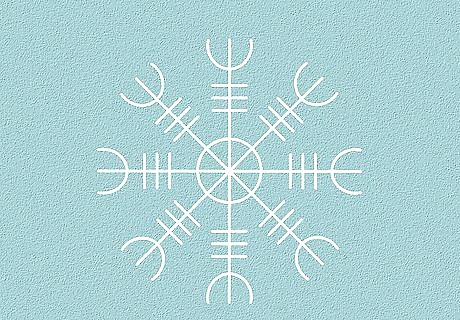
The aegishjalmur provides protection against enemies. Also known as the helm of terror or the helm of awe, this symbol consists of 8 arms that are made up of various sharp lines. In Norse mythology, this symbol was used to strike fear in a person’s enemy. The arms of the aegishjalmur are made up of Norse “z-runes,” which look like pitchforks. These runes represent protection and the ability to prevail over one’s enemies.
Mjolir
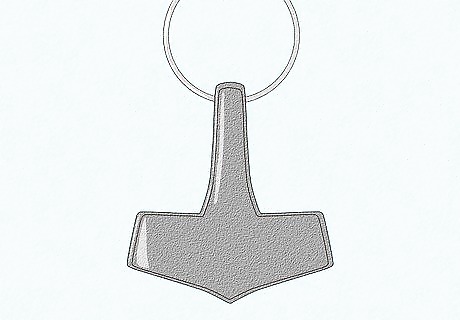
Mjolnir represents the Norse god Thor and his protective powers. Thor is a god in Norse mythology associated with lightning, thunder, and storms. Many also view him as the protector of humankind. In the myths, Thor’s weapon of choice was a hammer called Mjolir, and people came to wear amulets styled after his hammer for protection.
Bagua Mirror

The Bagua mirror is a protective talisman in Chinese Feng shui. The Bangua mirror is usually made in an octagonal shape and has 2 parts: a convex portion for eliminating negative energy and a concave portion for capturing positive energy. People usually place these mirrors outside of their homes to ensure protection and good fortune. People often place the mirror facing outwards away from their home or business to deflect any negative energy. Feng shui is an ancient Chinese practice that claims people can harmonize with the energy forces from their surrounding environment.
The Flower of Life

The Flower of Life protects your energy. This intricate symbol is a sacred geometric shape that symbolizes creation. This shape consists of 61 interlocked circles with certain patterns representing different aspects of life and creation. Some believe that this symbol can be used to protect your energy as you move through the various phases of life. The Flower of Life is important within sacred geometry, a practice that gives symbolic meanings to certain geometric shapes and patterns. There are other patterns hidden within the Flower of Life that also carry sacred meanings. For example, the Seed of Life, the 7 innermost circles, is said to represent the consciousness of God. The Egg of Life, which adds 6 circles on top of the Seed of Life, represents rebirth and new life.




















Comments
0 comment